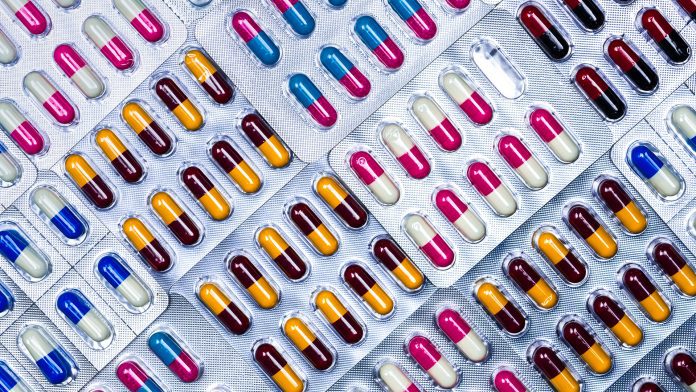
Synthetic antibiotics could unlock the capability of killing drug-resistant superbugs and tackling the antimicrobial resistance (AMR) crisis.
A groundbreaking discovery by a team of scientists from the University of Liverpool could revolutionise the future of treating bacterial infections with a new class of synthetic antibiotics that have proven to kill superbugs, including MRSA, without detectable resistance.
The team developed a simplified synthetic antibiotic based on the teixobactin molecule, used by producer bacteria to kill other bacteria in soil. They developed and tested a unique selection of varieties of synthetic antibiotics, optimising key features of the drug to enhance its efficacy and safety, plus developing it at a low cost at scale.
Health and Social Care Secretary Sajid Javid said: “It is fantastic to see such innovative work like this happening in the UK – another clear example of this country being at the forefront of scientific advancements which can benefit people across the world.”
Pioneering research into synthetic antibiotics
Lead researcher Dr Ishwar Singh said: “Introducing synthetic diversity to generate the library of synthetic teixobactins is important to overcome the high failure rates associated with the next stages of drug development.”
This new investigation builds upon previous research by Dr Singh, an expert in antimicrobial drug discovery and development and medicinal chemistry at Liverpool’s Centre of Excellence in Infectious Diseases Research (CEIDR). This programme was delivered by Innovate UK on behalf of DHSC to create five lead compounds for future use in the battle against antimicrobial resistance.
The research has demonstrated that a simplified version of the teixobactin molecule in the new synthetic antibiotic can kill a range of bacteria found in human patients, whereas current antibiotics are unsuccessful. In the future, patients may be treated with one dose of teixobactin per day for systemic life-threatening resistant bacterial infections. The new synthetic antibiotic is robust and stable at room temperature for years, therefore, do not need a cold chain for distribution and storage.
Scaling production at a low cost
The synthetic antibiotic is designed to be affordable to produce. The researchers swapped out certain amino acids on teixobactin for low cost, commercially available alternatives, resulting in the cost of materials reducing in price by 2000 times, whilst improving efficacy and safety. The researchers developed highly efficient solid-phase synthesis using automation, speeding up a single coupling step from 30 hours to just 10 minutes in high yields.
Furthermore, the team have optimised preparation to scale up yield from 30mg to 1g scale and beyond. The process can now be adapted for application up to 1kg scale or higher, simply by increasing the scale and size of the reactor. Scalability is an important key building block for commercial production to realise the therapeutic potential of synthetic antibiotics.
Dr Singh said: “Our motivation is to adapt the natural teixobactin molecule and make it suitable for human use. This is a journey. Through this project, we have demonstrated that we can make synthetic molecules at low cost and with high safety, which potently kills the resistant bacteria in mice. The advantage of synthetic diversity is that we can select or deselect properties and modify molecules to impact potency and other desirable drug-like qualities. Our ultimate goal is to have a number of viable drugs from our modular synthetic teixobactin platform, which can be used as a ‘last line of defence’ against superbugs to save lives currently lost due to AMR.
“Our next steps will be to focus upon the central benefit of synthetic teixobactin to overcome multi-drug resistant bacteria in different disease models, scale-up process, followed by safety testing, which if successful, could potentially be used in hospitals as an investigational new medicine and be turned into a drug fit for treating resistant bacterial infections in humans globally. We will work with colleagues from CEIDR which have expertise in antimicrobials from drug discovery to clinic, to develop synthetic teixobactins into viable drugs.”
























